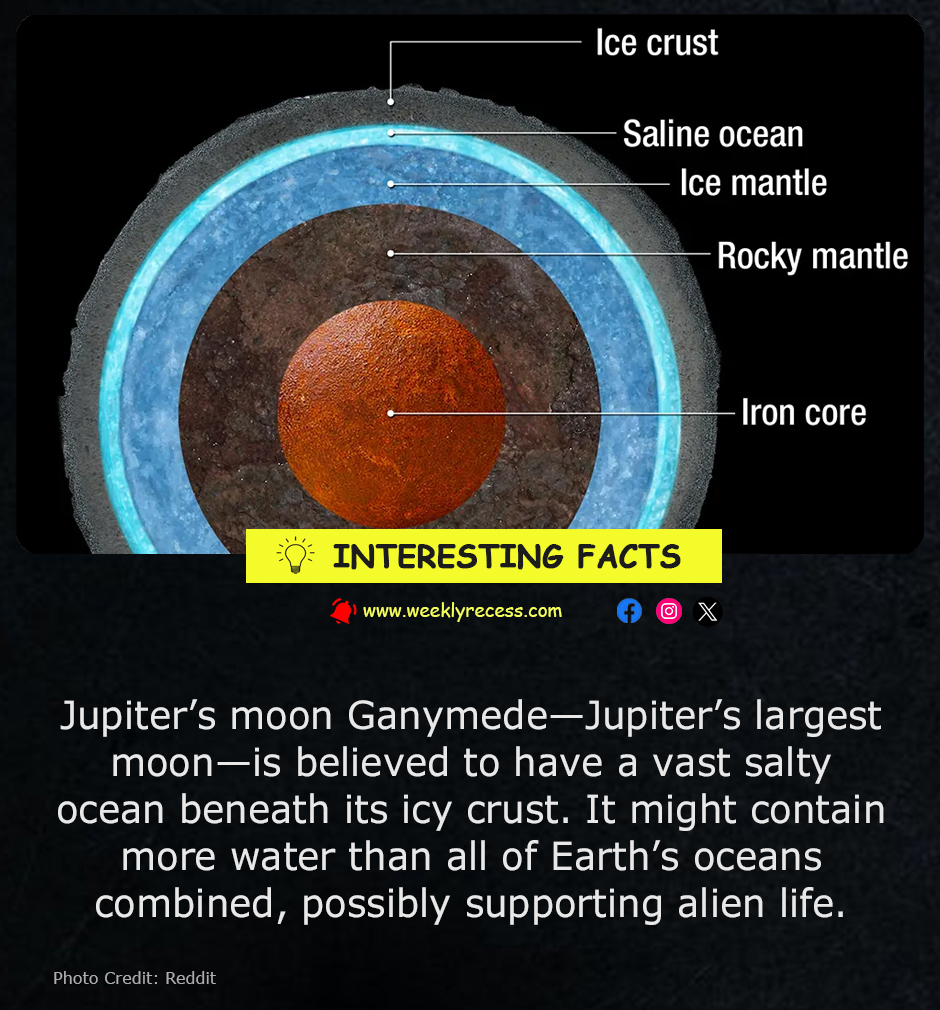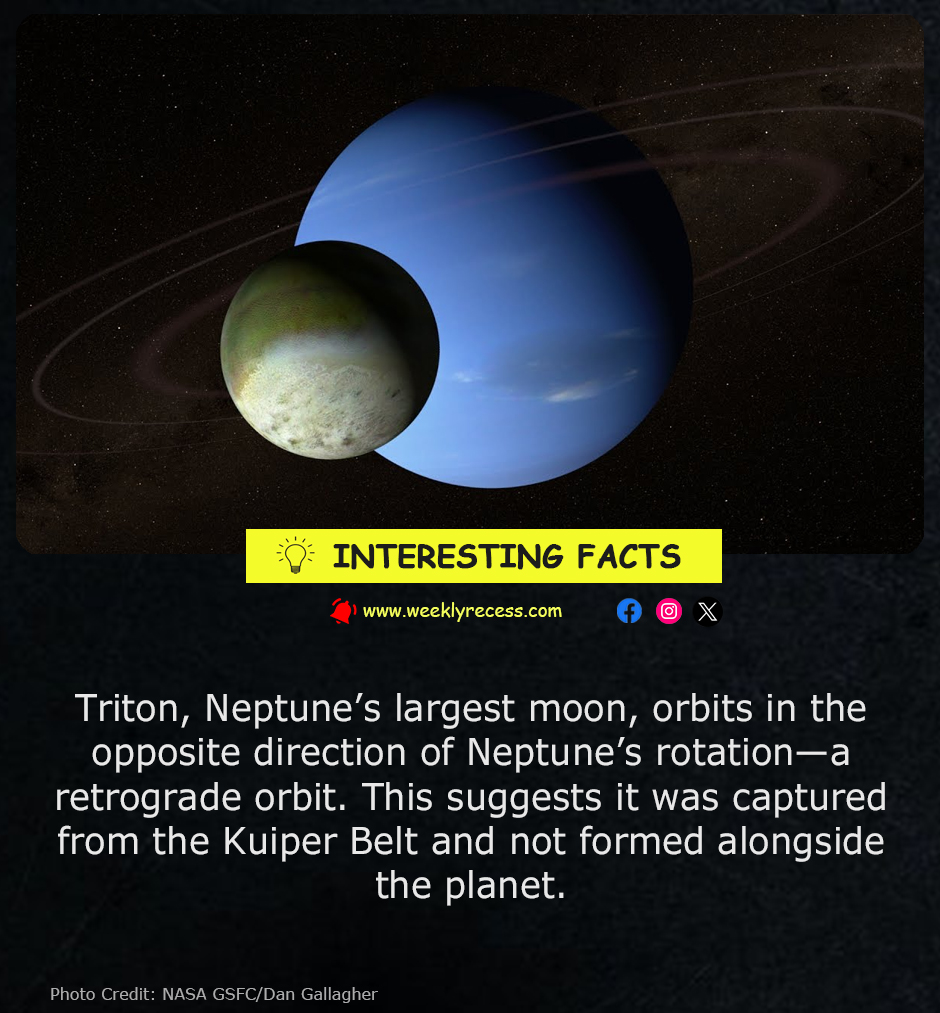Some scientists believe Earth may have once had not one, but two moons. According to the “double moon” hypothesis, a smaller companion moon once orbited Earth alongside our current Moon until the two eventually collided in a slow-motion cosmic crash. This ancient impact wouldn’t have been a high-speed explosion but rather a gradual merging that may explain a long-standing lunar mystery: why the far side of the Moon is thicker, rougher, and more mountainous than the near side. The idea suggests that the smaller moon splattered across the farside during the impact, creating the Moon’s asymmetrical structure. While still a theory, this intriguing possibility adds a dramatic chapter to the Moon’s already turbulent past—and to the ever-evolving story of Earth’s early skies.

Jupiter’s moon Ganymede may have more water than Earth—beneath its frozen surface.

Triton’s backward orbit hints it was captured, not born with Neptune.





